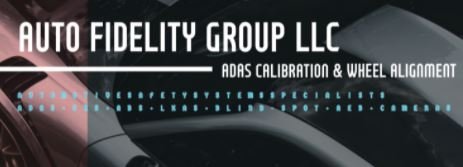North vs. South
There’s a battle that’s been raging in the auto repair business for as long as I can remember. There’s a definite line that separates the north and south, and it’s not the Mason/Dixon line. It’s known as the “Rust Belt”.
If you’re not familiar with it, well then, you must be from the far south. Any mechanic on the northern side of the rust belt knows it all too well. Rust seems to get into every area of the car, but it’s more evident underneath the car where it seldom gets washed off. Especially in an area that uses a lot of sand and salt, or a mixture containing salts and a chemical agent. Years ago in a lot of areas, they’ve outlawed studded tires because of the damage they could do to the roads, so a lot of those municipalities opted for these chemical concoctions instead. There’s less road damage from tire studs, but pot holes and car exteriors haven’t fared as well.
Rusty undercarriage parts carry their own rules for repair. Such as a rusted away tie rod nut that needs removed. Rather than even trying to put a socket on one of those half deteriorated nuts, the best thing to do is holler, “Get the gas axe!” (Cutting torch), and the more winters a car survived or the further north you go, the more the ol’ gas axe is as essential as a good set of sockets.
Even though trained mechanics are the same no matter where you go, there are still differences between what a mechanic north of the rust belt has to deal with vs. someone on the south side of it. The biggest difference is definitely having to deal with the rust. Rust and more rust.
Once in a while I’ll get one of those northern cars that has crossed the line and is now transplanted into my neck of the woods. They are easy to spot; just put it up on the lift and you’ll know. Even though the engine compartment isn’t immune from the effects of salt degradation, it’s a lot more noticeable under the car. The amount of rusted, flaking metal, and deteriorating nuts and bolts under some of these cars is unbelievable, and some of these rusty rides aren’t that old. (At least I haven’t run across a pickup truck where the frame has rotted off between the bed and the cab to the point it separates in half when you put them on the lift! I’ve seen a few photos of these rusted through trucks. Yikes!)
Since I grew up north, but moved below the rust belt line years ago, I’ve seen a lot of inventive ways people have come up with to subdue the ever encroaching rust Mother Nature has so graciously handed us. Undercoating, zinc plates, and some crazy electrical unit that is supposed to prevent rust from degrading the metal (Good luck with that one.), just to name a few. As a matter of fact some manufacturers actually offer lifetime warranties against rust on their vehicles that are equipped with their own patented rust prevention systems. Undercoating is probably the most popular. Works great, to a point. That is, until you need to replace a brake line or pull a fuel tank and that stuff is coating all the straps and bolts. (Been there-done that.)
There are also many other components affected by the long cold winters and road conditions. From suspension parts to the engine, nothing is immune to Mother Nature. Back in the days when most cars were still using a single grade motor oil (I know… age check here) and you had a really cold night the engine oil would turn as thick as molasses. Needless to say, a good strong battery and a sluggish turning engine… something had to give. Most of the time the weak point was the starter bendix driver, other times the bendix was fine but the starter housing would snap. But, even in the south I’ve seen the same thing, and I have even had a few ABS reluctors get iced over and split off of a CV shaft.
The further south of the rust belt you go the less snow, but more freezing rain and ice. It can coat everything with a thin layer of unyielding and impregnable ice. You can’t open a door or the hood, and whatever you do, don’t turn on the wipers. It seems like every year somebody will drop their car off with one wiper arm flopping around, while the other one scrapes across the windshield.
I can’t say for sure, but I’d bet there are certain diagnostic differences when it comes to certain situations between the north and south. These changes to certain diagnostic procedures may have something to do with all the rust or the extreme cold temps. But, in the south there are just as many different diagnostic adventures as well. The biggest issue is the heat. The never ending, over 100 degree days that just destroy rubber, glass, interiors, electrical systems, radiators, etc…. Some days even in the shade it stays well over a 100. No need in worrying about freeze plugs popping out, but you might need to worry about the dash pad warping so bad it looks like ocean waves. Just try keeping an aging car’s A/C system working in 105 degree weather while in traffic, without the engine overheating. And, did I mention… it’s hot! It’s really hot! It’s not uncommon to get into a car that’s been waiting in front of the shop to reach 145 degrees or more inside it.
Up north the winter season is several months long, and seems to linger on longer and longer the more you anticipate its end. In the south the winters aren’t nearly as long, but can be just as severe. Sure, they’ll still throw the sand and salt out below the rust belt, and yes they’ll plow the main roads. However, not all roads are plowed and not every municipality in the south has the same kind of inventory of equipment of a equivalent sized town would have up north. So, in most cases if there is even a warning of a potential accumulation of any amount of snow (large or small) all the schools close, businesses shut down, and all the groceries stores shelves will be cleared. You’d think it was an invasion or something if you didn’t know any better.
Between the snow, ice, hot temps, pot holes, rain, lightning, floods, and everything else you can think of that Mother Nature can throw at ya, repair shops have their hands full. Battling Mother Nature on either side of the rust belt has always been a never ending job. Mechanics just have to do certain things a bit differently depending on which side of the rust belt you’re on. It’s a long battle, and I don’t think Mother Nature is going to let up any time soon.














Recommended Comments
Create an account or sign in to comment
You need to be a member in order to leave a comment
Create an account
Sign up for a new account in our community. It's easy!
Register a new accountSign in
Already have an account? Sign in here.
Sign In Now